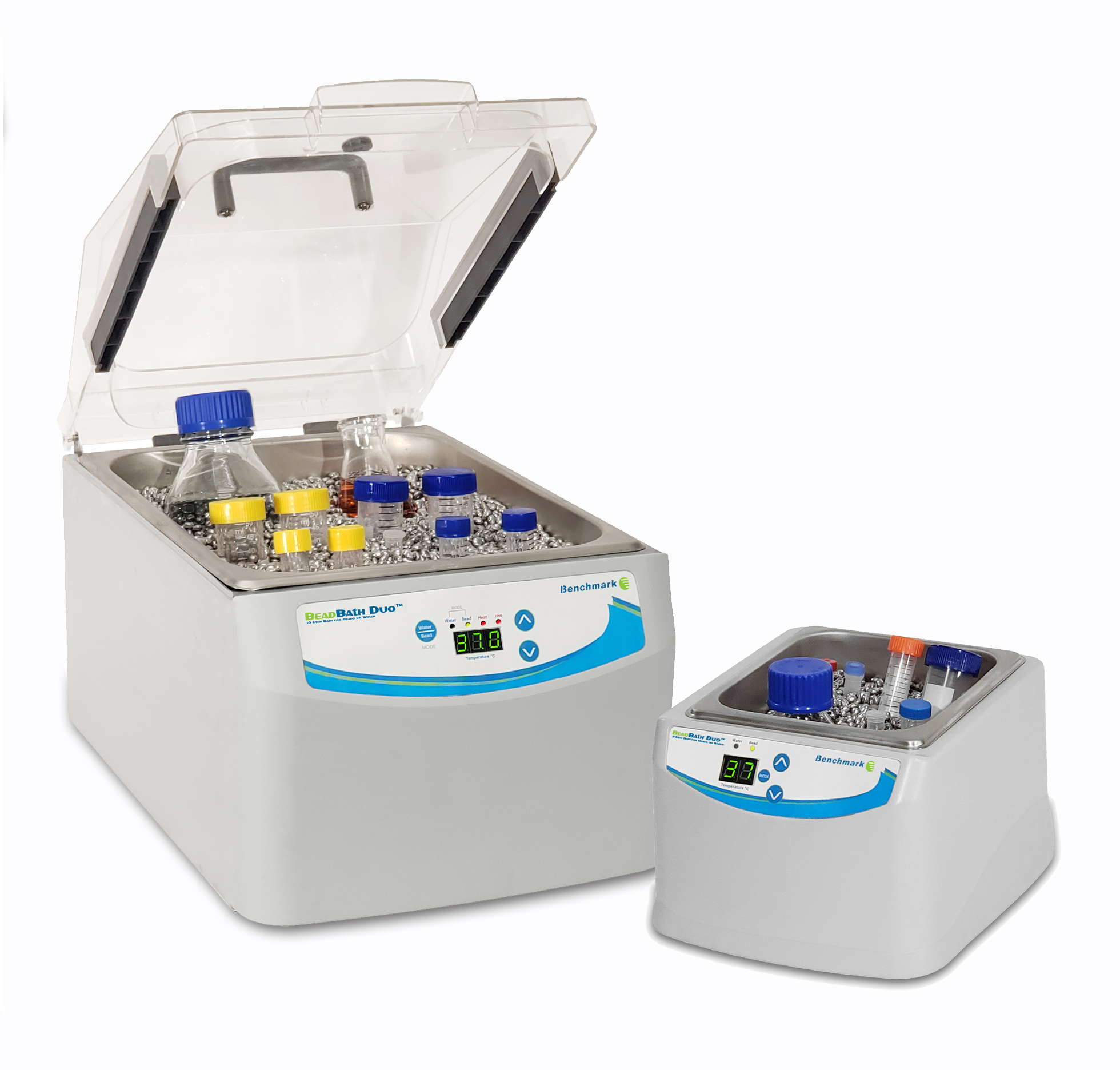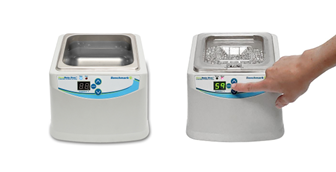Laboratory baths are versatile heating devices that are used for thawing media, warming solutions and incubating samples.
In a manner similar to a sous vide pot, a laboratory bath does not heat through direct contact but rather through a medium such as water or milled aluminum beads. This is reflected in the names: Water Bath or Bead Bath.
Water baths have long been the industry standard for cell culture and other molecular biology applications, but bead baths are gaining in popularity.
How does a lab manager decide whether a water bath or a bead bath is right for their laboratory?
Let’s take a look at some of the differences between a Water Bath and a Bead Bath.
Because water is an excellent conductor of thermal energy, a water bath heats evenly and uniformly across the entire surface of the bath.
Water baths are not likely to have hot and cold zones, so the entire bath can be reliably used and expected to be at the temperature shown on the digital display.
Aluminum beads, like the popular Lab Armor beads, transfer heat energy less efficiently and can potentially heat less uniformly. This means a bead bath could be warmer in some spots and cooler in others, so a temperature probe would be helpful to confirm the actual temperature of a specific zone.
On the other hand, water is also an excellent source of contamination and hot water spills pose a potential safety hazard to laboratory technicians. They also tend to rust over time and become an eyesore.
A bead bath is simple to maintain, easy to clean and greatly reduces the risk of injury and contamination.
A water bath needs to be constantly monitored and refilled to prevent an element burn-out from evaporation.
A bead bath can be left on indefinitely and requires no warm up time – Its always ready for work.
One of the most common question about water bath and bead baths is: “Can I convert my current water bath into a bead bath and save money?”
While the answer is: “Yes,” the lab manager needs to be aware of the potential for temperature stratification and uneven heating.
Because a water bath has just a single heating element on the bottom, the heat may not spread evenly through the Lab Armor beads.
A bead bath made specifically for Lab Armor beads is built with additional heating elements inside each of the four bead bath walls to power the heat energy all the way through the bead bath.
Until now, there were only three options for laboratory water bath or bead baths:
- Buy a water bath and use it with water
- Buy a bead bath and use it with beads
- Buy a water bath and convert it to beads
Benchmark Scientific has added an exciting fourth option with the release of their new BeadBath Duo which is specially designed to function as BOTH a water bath and/or bead bath.

The BeadBath Duo come in two popular sizes, a 2L (B2402) and 10L (B2410) and feature a “mode” switch to select either bead or water mediums depending on preferences or application.

Each of the BeadBath Duo come with a lid to reduce evaporation when operating in the water bath mode and each are capable of heating up to 80C when in water bath mode.
Benchmark Scientific BeadBath Duo baths do not come with beads; those must be purchased separately.
Benchmark Scientific and Stellar Scientific have a bead bath or water bath to fit every lab budget and every sized lab.


